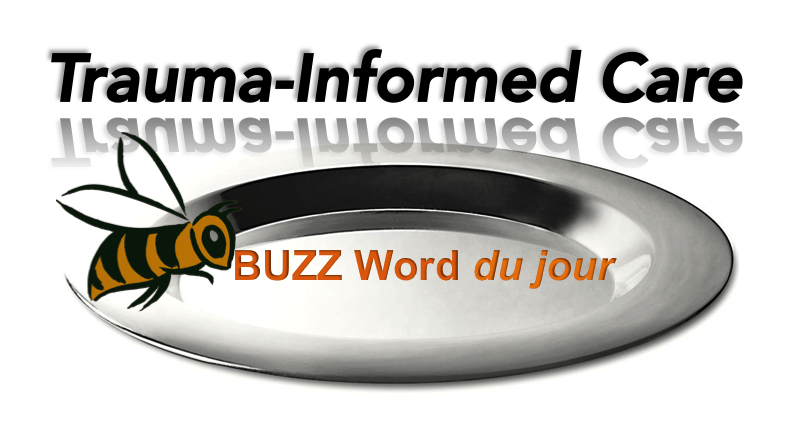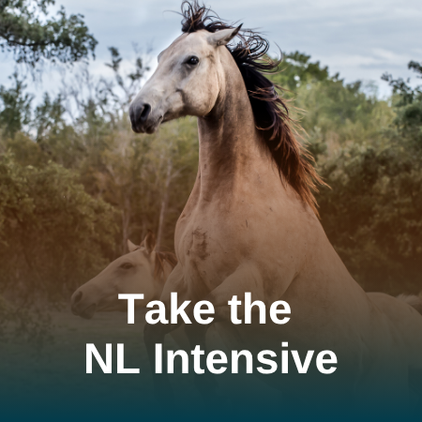Reflections on Natural Lifemanship Fundamentals
Buzzwords, jargon, flavor of the day – they are all ways that we describe a common phenomenon in our society, image over substance. Why do we use them?
Usually, these terms begin as an attempt to create a common vocabulary, but as the concepts catch on we often short cut the hard work of understanding for the quick fix terms. In the world of trauma recovery and human relationships, we often drift to such terms without really understanding what they mean. One of the current buzzwords in this work is Trauma-Informed Care (TIC). The term began as a way of helping professionals and caregivers understand that trauma impacts the way children develop. Over the past 20 years, I have watched the term devolve into a convenient quick way to say ‘my program is relevant’ without having any substance to back it up.
In its purest sense, TIC is about a shift into understanding how the brain responds to life-threatening situations, how those shifts impact our development across the life cycle and how our hardwiring for relationship and rhythm provides a pathway to restructure those responses. It is a shift from behavior modification approaches that revolve around consequences and rewards, to approaches that focus on building healthy relationships. I have attended more training, read more articles and watched more videos about TIC than I care to remember. More often than not these approaches are just recycled behavior modification with a kinder tone and a bit of brain research to make them look scientific. Rarely do you see something new outside of the great minds of Dr. Dan Siegel, Dr. Bruce Perry, and Dr. Karyn Purvis.
I have spent the past 20 years working with children, adolescents, and families who have experienced trauma and are struggling to develop authentic relationships. I have studied the works of these great minds while questioning why some individuals seem to be able to apply these techniques effectively and others do not. I keep searching for an answer, the right technique, or the right words that provide healing. It is not that I do not want to help my clients, it is simply that I struggle with how to teach clinicians to develop genuine relationships while maintaining appropriate therapeutic boundaries.
This past weekend I had the opportunity to attend a 3-day training that I desperately wanted to be something different, but fully expected would be the same recycled material layered on the love of a particular activity – in this case, horsemanship. I have studied Equine Assisted Psychotherapy (EAP) models for a couple of years now and tend to see one of two things: either practitioners who really just want to ride horses and use EAP as an excuse to do so or play therapists who like working in an extra-large sandbox. I expected this training to be the former.
It was with this mindset I drove onto the tranquil campus of Spirit Reins to attend Natural Lifemanship’s Fundamentals of Trauma-Focused Equine Assisted Psychotherapy. I sat through the first 4 hours as they introduced the model with my curiosity piqued. The trainers seemed to deeply understand the human need for relationship and the way a horse responds to a social connection in similar ways. Authenticity is a rare thing in our world and even rarer in our profession. Many therapists I know, mask an enormous layer of insecurity behind a façade of clinical jargon. We do not do authentic. Our training programs teach us to appear connected while maintaining ‘professional boundaries.’ We get warned about the dangers of burnout, dual relationships, and counter-transference.
For the practitioners of Natural Lifemanship, relationship is not a buzz word, it is a way of life. Humans are easily fooled. We value thinking over feeling and logic over intuition. Horses trust their gut. They have to for survival, and as such provide an incredible classroom to learn about authentic relationships.
This reality came home to me on the afternoon of the first day. I have more horse experience than the average person, but I am still mostly a novice. I do however know how to catch, halter and lead a horse with decent confidence. Our first objective was to attempt to connect with a horse through mutual agreement. The task was simple. Use your body energy to ask for connection and then spend time in connection. My initial thought was, ok whatever, I can get this horse to follow me, but ‘connection’ that’s simply a personification of the submissive behavior of the animal.
As I attempted to get Beau to connect, he simply ignored me. I raised my external body energy, yelling, flapping my arms, clapping etc… to no avail. As hard as I tried, I simply could not raise my internal body energy. Bettina, our trainer, then made a comment that brought 20 years of frustration in the field into clear focus. She explained how for mental health clinicians this is often a difficult task because we are trained to remain calm. After all, you can’t panic when a client shares their story of being sexually assaulted. So we master the art of keeping our body in a low energy state.
As I reflected on this more throughout the weekend I realized that authentic relationship must occur in the entire brain (Lower, middle and upper). One of the basic brain fundamentals taught in every TIC training is that when we are highly aroused we cannot effectively activate the thinking part of our brain. The easiest way to bring arousal down is to limit the limbic system because our emotions easily drive our arousal state. The result is that as therapists we learn to remain calm and in our neocortex during sessions by disconnecting from our limbic system. We then rely on techniques such as mirroring and reflective listening to imitate genuine relationship. These techniques do not work on horses. Horses only respond to genuine relationships and as such provide a training ground for building authentic connections.
Regulating our arousal while remaining mentally focused and emotionally connected is a difficult skill but at the heart of an authentic relationship. No wonder we have such a high rate of depression, divorce, and burnout amongst mental health professionals in this country. We have trained an army of people to be disconnected.
One of the principals of Natural Lifemanship is that if it is not good for both it is eventually not good for either. Effective therapy requires the therapist and client to connect in a genuine and healthy way. These principals use horses to allow clinicians and clients to practice and master the skills of authentic connection. Natural Lifemanship is as much about training the practitioners how to engage in an authentic relationship, as it is about rewiring the client’s brain.



Recent Comments